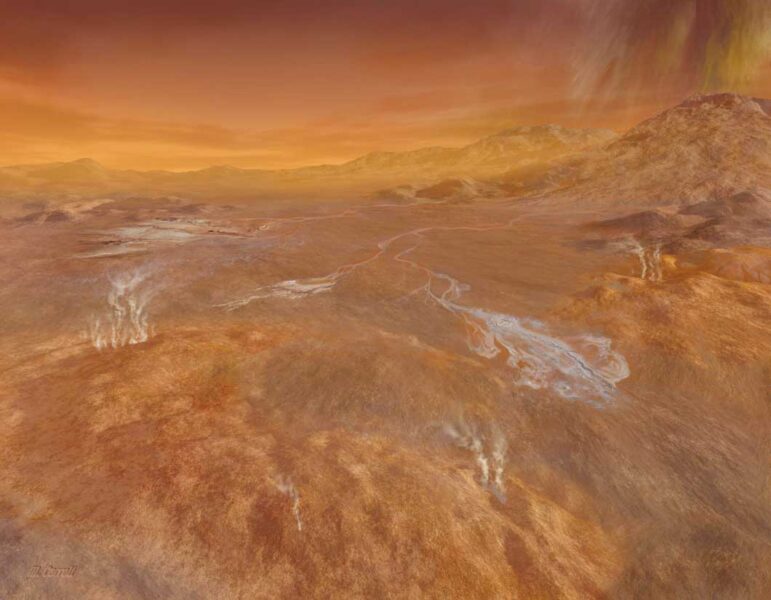Recent discoveries on Titan and Venus show us that nature doesn’t need water to make features that remind us of home.

NASA / JPL
What do we mean when we say we’re looking for other Earths out there? As we learn to locate and inspect planets around other stars, we fantasize about finding bodies of liquid water sloshing around on the surface of a rocky world under the light of a reasonably stable star. We have convinced ourselves that our own world is the best of all possible types for life. We justify this bias by invoking the unique properties of organic molecules in a water solvent. Honestly, this is hard to evaluate until we have some other examples of planetary biospheres, and explore widely enough to be sure we’re not just overlooking truly alien life.
Our terrestrial minds fetishize water worlds. Yet recent exploration has shown that two very dry worlds are emerging as our solar system’s most Earthlike in several important ways. Both Venus and Titan are often described in terms that emphasize how forbidding and alien they are. And they are — if you consider surface conditions. But when you look at forms, patterns, and processes — at what is actually going on — they seem a lot more familiar.
Titan is far too cold for liquid water except on rare occasions when a watery cryovolcano, thinned with ammonia antifreeze, bursts onto the surface, or when the heat from a large impact melts a temporary crater lake that quickly freezes over. Yet on Titan we see fresh and familiar geological forms — dunes, river valleys, volcanoes, and shorelines — that remind us of home, especially when combined with the dense nitrogen-rich atmosphere that rages with clouds and storms and pulses with seasonal patterns. Though Titan is devoid of surface water, its landscapes are shaped by wind, rain, flowing liquids, and complex chemical and physical cycles encompassing the entire globe.
Venus, too, is an unusually active world, with lightning storms, howling winds, variable cloud brightening, active volcanoes, and complex chemical cycles. The surface is way too hot for water. But just as Titan surely harbors a cold water ocean somewhere underneath its frigid surface, Venus in a sense has an ocean 50 kilometers in the sky. The clouds themselves are a realm of condensed water (drenched in sulfuric acid), chemical imbalances, and solar energy — the kind of place that if you squint a bit, looks like an astrobiologist’s dream.
Water worlds are rare, at least around these parts. But in exotic places such as Venus’s clouds or Titan’s lakes, we find liquids, energy sources, and interesting chemistry of unknown complexity. On Titan methane plays the role of water on Earth. On Venus carbon-rich volcanic lavas probably carved the river-like channels. Given a planet with active flows of matter and energy, nature seems to find a way to repeat the same kinds of forms and patterns in very different conditions, using whatever construction materials are present. Could life also be one of these phenomena that nature finds a way to make using the materials at hand, given energy and a range of construction materials?
As we look around our galaxy we may find many worlds with alien conditions but familiar forms. And who knows, finding active worlds with complex surfaces and energetic atmospheric cycles may ultimately be more important than finding a place where we could drink the water.
This article originally appeared in print in the August 2010 issue of Sky & Telescope. Subscribe to Sky & Telescope.
 0
0
Comments
You must be logged in to post a comment.